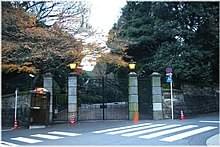Ties between the Italian Republic and Japan are referred to as Italy-Japan relations.
Italian japanese restaurant singapore official bilateral connections between Japan and Italy were established on August 25, 1866, the two nations had been in communication at least since 1585, when It Mancio led the first Japanese expedition to Europe, which landed in Rome.
Italy and Japan both saw significant changes in their political and social structures throughout the 19th century, with the former achieving national unification in 1861 and the latter starting a phase of fundamental modernization along Western lines that was known as the Meiji Restoration from 1868. During this time, ties between the two countries became closer and eventually led to their involvement as allies in both World Wars.
Both Italy and Japan went through a period of rapid economic growth following the Second World War, which allowed them to emerge from the disastrous circumstances they had found themselves in and forge new trade and economic agreements as well as active scientific cooperation for technological advancement.

Italy and Japan now have a pleasant and amicable relationship. Italy is one of the most well-liked nations in Japan and one of the most popular tourist destinations in Europe, mostly due to the popularity of the "Made in Italy" brand, which has helped increase Japanese awareness of Italian culture since the 1990s.
Although the first treaty of friendship between Japan and Italy was signed in 1866, the two countries' initial interactions may be dated to the 13th century, when Marco Polo (1254–1324) first learnt about Japan, which he named Cipango (or Zipangu). Despite never having set foot on Japanese territory, the Venetian explorer portrayed it as a vast, wealthy island nation.He is recognized as the pioneer who popularized the concept of a "island country" throughout Europe.
At least until 1543, when a Portuguese ship carrying Portuguese and Italian Jesuits was blown off course and landed in Japan, Japan remained comparatively isolated and consequently impervious to Western influence. Pope Gregory XIII was visited by the Tensh embassy, which was sent by the Japanese Roman Catholic Christian daimys. The missionary Alessandro Valignano, together with the Christian daimyos Tomo Srin, Sumitada Mura, and Arima Harunobu, took the initiative to start the first Japanese mission in a foreign country. The group was made up of the Jesuit Diogo de Mesquita, who served as their translator, and four young dignitaries, It Mancio, Giuliano Nakaura, Martino Hara, and Michele Chijiwa.
When the group first arrived in Italy in 1585, Pope Gregory XIII and especially his successor Pope Sixtus V welcomed them to Rome and gave them the Church of Santa Maria dell'Orto as a gift. This church has since served as the place of worship for the Japanese Catholic community in the Italian capital. Another party led by the samurai Hasekura Tsunenaga was despatched in 1615 by the daimy of Sendai, Date Masamune. The latter saw Pope Paul V and publicly asked for the dispatch of Christian missionaries to Japan as well as a commercial agreement between Japan and Mexico (at the time a Viceroyalty of New Spain). continue reading...